Earlier this month marked the second anniversary of our arrival on the Costa Blanca and I’ve been spending so much time thinking about my life in Spain that I thought I would write a post about it.
I’ll tell you about a few of the things I like the most about this lovely country. I’m not delving too deep into things, just giving an overview of stuff I like.
Menu del Dia
How have I managed to live all my life without the wonderful Menu del Dia? It must surely be the best culinary invention ever. It translates into English as ‘The Daily Menu’ and from as little as 10 Euros it typically includes the following:
- Slices of baguette and alioli (garlic mayonnaise) on the table.
- A starter. One usually has the choice of 5 or so starters.
- A main course. Again, one can choose from about 5-10 dishes but some restaurants offer loads more.
- A dessert or coffee/tea.
- Half a bottle of wine, a beer, a bottle of water, or a soft drink. Yes, half a bottle of wine. Per person.

If you ever find yourself in a Spanish restaurant then do yourself a favour and ask to see the Menu del Dia. Many restaurants have them displayed on a board on the pavement so it’s never hard to find and the further you walk away from a tourist attraction, the cheaper the menu, the better the food and the bigger the portions. Also, don’t judge a restaurant by its looks as a paper table cover and plastic chairs mean nothing and nearly all the great meals I’ve had in this country have been in such places. In fact, the best value for money meal I’ve ever had was in the cafeteria of the local government hospital in Vila Joiosa when I recently visited a neighbour.
When you eventually finish your meal and ask for the bill, your waiter will often present it together with a little chupito for each person. It’s a shot glass normally filled with muscatel wine or limoncello, but you could also be offered a few different bottles of something interesting and you can make your own choice.
To my distress, I recently noticed the appearance of fledgling love handles, so soon I’ll either have to dust off my bicycles or stop eating Menus del Dia.
The Chiringuito
Again, where has the humble chiringuito been all my life? There are different types of chiringuitos (pronounced chi rin geeto), but the most common one can basically be described as a beach bar that gets built in about a day, stays open for the summer and then gets demolished for the winter. There are also permanent ones at places like the local port and the local train station and the one at our port has become a regular hangout.
It’s a great invention and I love the concept. It’s where we meet friends and hang out with neighbours. Our local one is just 3 minutes’ walk down the road at our little port and it’s open all year, yay!
Wine prices
A really nice bottle of wine or cava (Spanish champagne) from the supermarket will set you back as little as 2 Euros and it won’t taste like cheap plonk. I’m by no means a wine connoisseur and I never buy expensive alcohol so having such nice wine and bubbly available for so cheap is a real bonus. It’s even cheaper than in South Africa!
I learned recently that Spain is the largest exporter of wine in the world and at these prices, it’s no wonder.
Driving in Spain
I imagine you’re having visions of mad Spaniards in banged-up little motor cars racing all over the road and shouting obscenities at one another. No, that would be the Italians. I was very surprised to observe how calm and patient the Spanish are behind the wheel of a car.
They definitely don’t know how to use traffic circles (roundabouts), but apparently, that’s because it’s a newish addition to the Spanish road system and nobody’s quite sure how to use them yet, even driving instructors. I could only use my South African driving license for a year before needing to obtain a local license and I couldn’t simply swop it for a Spanish one like the Europeans and South Americans can do, so I needed to get it from scratch, like a kid. I needed to take driving lessons and during the very first lesson, the instructor asked me to make a U-turn at the upcoming circle so I crossed into the inside lane as soon as I entered. Miguel had a fit.
He then proceeded to teach me that when I approach a circle I need to be in second gear, enter the circle in the outside lane, remain in the outside lane all the way around, even when making a U-turn and also remain in second gear even if it’s a big circle and there’s no other traffic in it. I don’t EVER enter the inside lane and especially not during my driving test. I asked him why they build circles with two or three lanes if folks are only ever allowed to use the outside lane and his reply was ‘that’s for when you get your license, then you can drive how you like’.
Parking. If you need to get your car into the smallest possible parking space then ask a Spanish person to park it for you. The bumper on your car, the one in front and the one behind will never quite be the same again but your car will have made it into the gap, no matter how small.
Do you need to stop in the middle of the road to offload something, pick up someone or just have a chat with a friend? Will you hold up traffic in the process? No problem! The Spanish drivers behind you will generally wait very patiently for you to finish what you’re doing and the one driver who hoots and calls you something that rhymes with ducking banker will more often than not be driving a car with UK number plates.
Community
The more contact I have with the Spanish, the more I like them and one of the things that endear them to me the most is their great sense of community. They do everything together and every occasion is an excuse for a party.
Every June the Spanish gather on the beaches during the bonfire night of San Juan for a night of merriment, bonfires and midnight swimming while the police pretend not the notice the illegal fire making activities.
During early evening the neighbours start gravitating down to the beach and by sundown the wine is flowing, the food is on the table and the conversation is underway. A fire eventually makes its appearance and at midnight we’re at the water’s edge debating if we should jump over 12 waves or let 12 waves wash over us while standing with our backs to the sea. Nobody is quite sure what the tradition entails and in the end, we pretty much make it up as we go along and half of us go in for a swim, which always sounds like a good idea after a bit of red wine. It’s a great evening.
Fiesta!
In this country, one doesn’t have to travel far to find a fiesta and if there isn’t something going on in your town this weekend then chances are that the party is happening in one of the neighbouring towns or villages. Spain has LOADS of public holidays and this past week alone we had two of them so after breakfast yesterday we were off into the mountains to the village of Orxeta, where there was a fair this past weekend.
The two big events in our town every year are the Easter procession and the Moors and Christians. These are big budget, spectacular events with processions in the street, bands, gunfire and smoke and special effects. It’s the highlight of the year and it’s a spectacle to behold.
Then there are the fiestas in the nearby villages, like the one in Orxeta. It’s a tiny little village and their procession consisted of a handful of the locals who walked around the village with a 4-piece band and things culminated in the square with a simple cheerleader type act. It was extremely amateur and extremely charming and I had a marvelous time.
Learning Spanish
One of the obvious benefits of moving to Spain is that it gives us the opportunity to learn a foreign language and yet it’s surprising how many foreigners don’t bother. I highly recommend that you make the effort and learn to speak this wonderfully rich language as it will enhance your life in Spain tremendously.
According to a 2013 article by The Telegraph newspaper, Spanish is the third easiest language for native English speakers to learn, after Afrikaans (my mother tongue!) and French, so it should be easy, right? I’ll tell you this much for nothing – whoever invented Spanish grammar was an evil little bastard and I’m glad he’s dead.
My fellow South Africans who flock to Australia learn new words like yea mate and brekkie (breakfast), while I learn how to conjugate verbs in the preterite past tense and I sometimes wonder if I drew the short straw. Oh well, onwards and upwards.
My life in Spain, going forward.
I could write a book about all the things I like about Spain, but I’ll leave it for now. I could also talk about things I don’t enjoy, like their apparent ignorance of the fact that dogs don’t like fireworks, but these are few and life is too short to talk about negative stuff so I won’t.
My Spain related goals for the upcoming year are to learn MUCH more Spanish, cook better paella, make better tapas and explore more. It would be nice if I could also eat a bit less, but I think that’s a pipe dream.
I hope you’ve enjoyed this post.
Hasta luego.

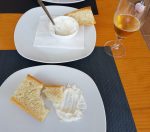




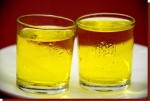


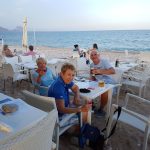













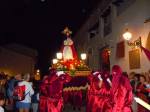
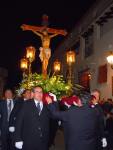
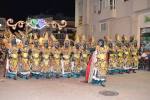
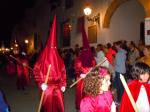

As always so well written and very informative. Look forward to a book one day, apart from the Cooking Pot.
LikeLike
I’ve enjoyed a lot of chuckles, thankyou ‘takk veldig’, All the familiar things about living here are so very well put with your humorous vignettes,Renette- I’ve missed seeing you at Nelly’s, but then <i've been away a lot. Too much health & family happenings in Norway.
I do want the book you wrote if it's finished 'The Cooking Pot'-as I did sign up for it…haven't heard any more from you about it coming?
All the best! Patricia
LikeLike